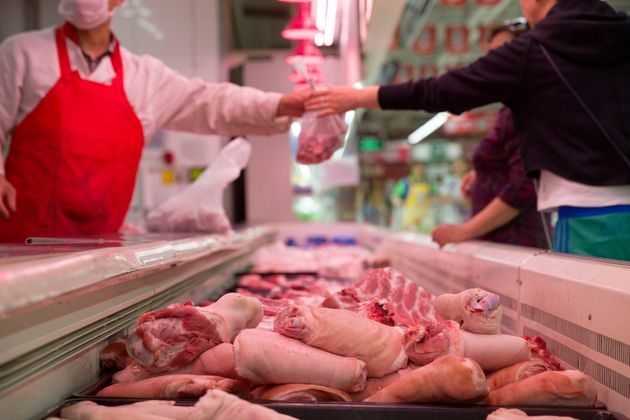
As news emerged over the summer of how Britain’s supermarkets are reportedly sourcing meat from pigs killed using carbon dioxide, outraged consumers have been left with no way of choosing pork, bacon or ham produced more humanely.
The slaughter method in question is said to involve lowering pigs into a gas chamber, causing them to gasp for breath and hyperventilate, therefore causing pain and panic amongst the terrified animals. This often goes on for 30-60 seconds or more.
Today, at least half of Britain’s pigs are killed this way.
It’s not only supermarkets and industry assurance schemes that are allowing it: even some organic pigs can be killed this way. So where does this leave consumers? Pretty powerless.
As it stands, consumers have no way of knowing whether meat comes from pigs gassed or stunned by any other method. There’s nothing on the label. There’s no obvious way of choosing one supermarket over another, in this case, as most (if not all) have gone down this route. You can’t even tell by choosing higher welfare labels.
According to the Humane Slaughter Association (HSA), “If a stunning method does not cause instantaneous insensibility [until dead], the stunning must be non-aversive (i.e. must not cause fear, pain or other unpleasant feelings) to the animal.”
Against this common-sense benchmark, gassing pigs with high concentrations of CO2 falls well short of the mark. As far back as 1996, clear scientific evidence highlighted that CO2 stunning for pigs reportedly causes severe welfare problems and a high degree of suffering. This science was reviewed in 2003 by the Farm Animal Welfare Council, the UK Government’s own expert advisory body on welfare, which concluded that CO2 pig slaughter was “not acceptable” and called for a ban within five years.
A year later (2004), the European Food Safety Authority (EFSA) also condemned CO2 stunning for pigs as being “aversive” to the animals. In 2009, the newly adopted EU Regulation on slaughter and welfare expressed disquiet, stressing the importance of exploring a phase-out of CO2 for pigs.
So how did a slaughter method so widely condemned as cruel become the norm? In short, there seems to have been a quiet campaign to erode confidence in the slower, perhaps more labour-intensive method of electrical stunning. When done well, it can render a pig unconscious within a fraction of a second: well before a mammal’s nervous system can register pain. In welfare terms, the stun is instant. However, lack of investment in training, design and equipment has meant that all too often the method isn’t done well.
Perceived positives of CO2 gas killing have been played up; such as the ability to keep pigs in groups all the way to those final moments. However, it is hard to see how this balances against the severity of suffering during the killing process.
My view is that the move was driven by asking the wrong questions about animal welfare as well as the attraction for industry of efficiency and scale.
With the search for alternatives picking up pace in the wake of publicity, Compassion and the RSPCA have issued a joint statement, calling for “the use of high concentrations of carbon dioxide for the killing of pigs to be legally prohibited; and new, humane systems to be developed and commercially available to replace the use of high concentrations of carbon dioxide” by no later than 1st January 2024.
Clearly, action is needed and the sooner the better.